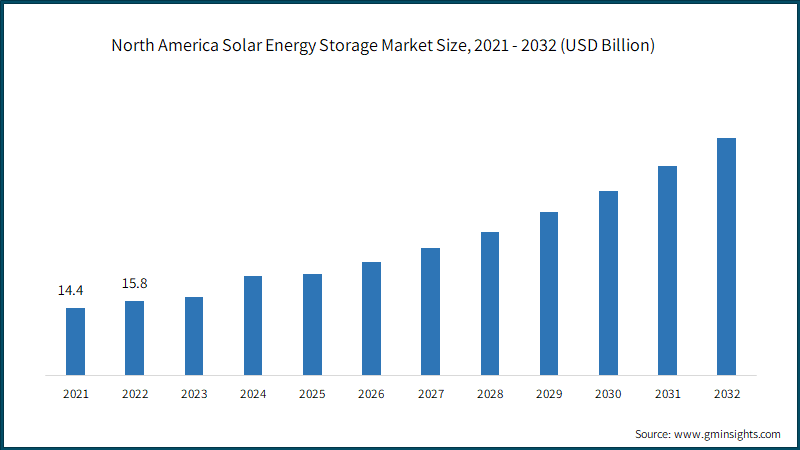Home > Energy & Power > Energy Storage Systems > Solar Energy Storage > Solar Energy Storage Market
Solar Energy Storage Market Analysis
- Report ID: GMI3507
- Published Date: Jul 2023
- Report Format: PDF
Solar Energy Storage Composition Market Analysis
Lithium-ion energy storage systems is slated to witness a significant upsurge on account of the ongoing technological advancements along with rising demand for reliable energy storage units across various application verticals. These unis have witnessed significant investments owing to its versatility, allowing its deployment across residential, commercial and industrial sectors. This chemistry offers potential cost reductions through increased production capacity, material advancements, and competitive supply chains. However, the rapid growth of electric vehicles (EVs) and the integration of stationary solar solutions is predicted to contribute to the positive industry outlook for lithium-ion batteries.

The 2,501 to 5,000 kW capacity segment held approximately 18% share of the solar energy storage market in 2022. The favourable regulatory inclination for self-consumption along with introduction of beneficial incentives from the grid operators and distribution companies to manage grid feed-in is estimated to influence the industry dynamics. Moreover, as the integration of battery energy storage (BES) becomes more common due to declining costs, retrofitting batteries with small-scale photovoltaics will drive the demand for energy storage.
The solar energy storage market from > 10,000 kW capacity is poised for significant growth as several nations recognize the need for essential reforms to accommodate the increasing share of variable renewable energy (VRE). The integration of ancillary services into the grid and the establishment of specific markets to compensate for individual services such as primary and secondary frequency reserves and firm capacity is likely to influence the industry expansion. In addition, rising adoption of behind-the-meter storage are expected to have a positive impact on the industry dynamics, further boosting the demand for large-scale solar energy storage systems.
Solar energy storage market from off-grid installation segment will register gains ate nearly 10.1% through 2032. This growth can be credited to rising adoption of renewable energy solutions, including mini-grids and stand-alone systems that are cost-competitive in providing electricity access. Ongoing technological advancements coupled with innovative delivery models have led to significant cost reductions, making them viable for a variety of stakeholders, including local entrepreneurs, communities, and the private sector. Positive regulatory landscape, supported by consumer preferences for self-sustaining and sustainable electricity solutions are some of the key factors shaping the comprehensive growth of the market share for off-grid renewable energy solutions.
Regulators worldwide have consistently prioritized the expansion and advancement of plans, reforms, and programs to facilitate the implementation of grid-scale solar projects. Introduction of measures including portfolio standards, clean energy initiatives, green bonds, and renewable certificates have been implemented to promote renewable energy deployment across different regions. While the regulatory and industry prospects indicate significant growth potential, the market is currently experiencing moderate growth owing to ongoing financial challenges.
The residential application segment of solar energy storage market will witness an appreciable momentum owing to the rising demand for enhanced technology in the occurrence of storing excess energy in line with shifting consumer’s inclination toward renewable energy. Acceleration electricity demand across remote areas combined with urban and sub urban regions along with upgradation of prevailing energy networks is set to positively influence the industry landscape. Moreover, ongoing technological advancements coupled with increasing R&D investments and expenditure for the product development will further boost the industry dynamics.

The North America solar energy storage market reached USD 15.8 billion in 2022. Rising energy prices, along with increasing concerns over the availability and environmental impact, has augmented interest in energy efficient technologies across the region. The industry is propelled by rising energy consumption owing to the increasing urbanization and growing population, continuous drive for technological innovation, coupled with various legislative requirements and harmonization policies focused on energy efficiency, has propelled the industry dynamics. The shift toward clean energy sources and the push for rural electrification have contributed to growth in the industry across the region.
Respective governments in countries including China, India, Japan, and South Korea are actively working towards reducing carbon emissions and achieving their energy transition goals. Additionally, the decreasing cost of batteries will serve as an additional incentive for the widespread deployment of clean energy solutions further complement the industry landscape.

